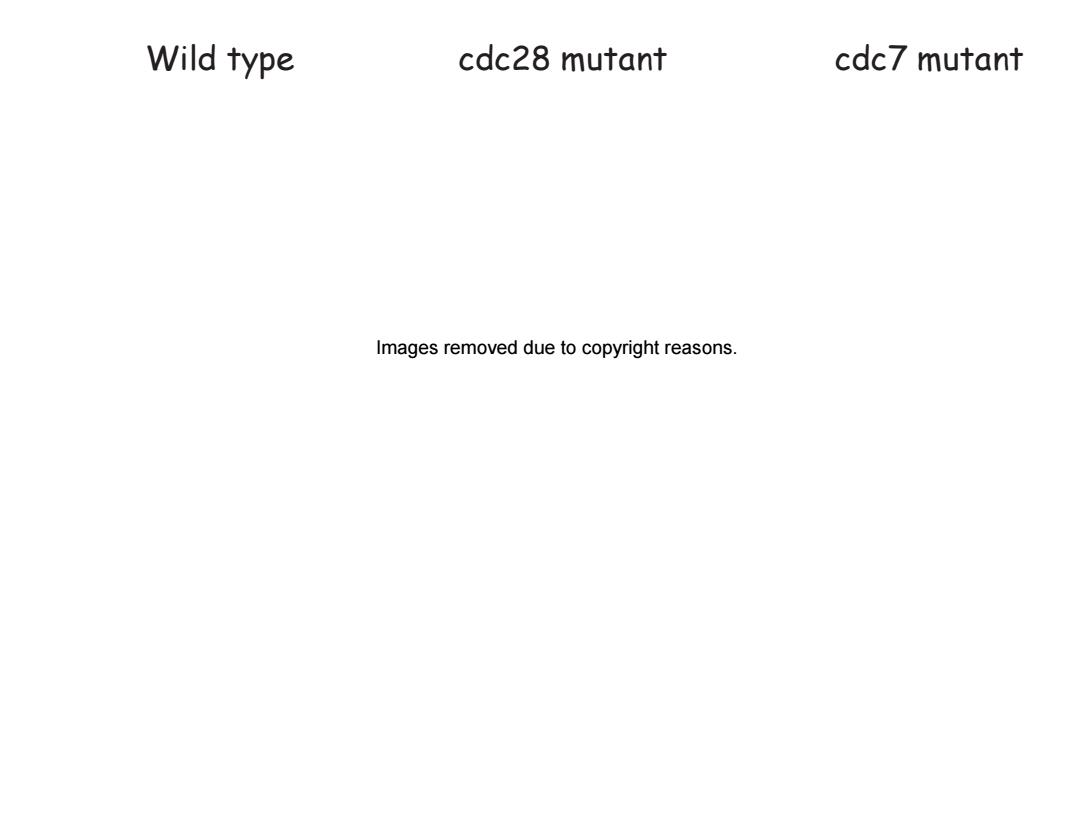
Wild type cdc28 mutant cdc7 mutant Images removed due to copyright reasons
Wild type cdc28 mutant cdc7 mutant Images removed due to copyright reasons
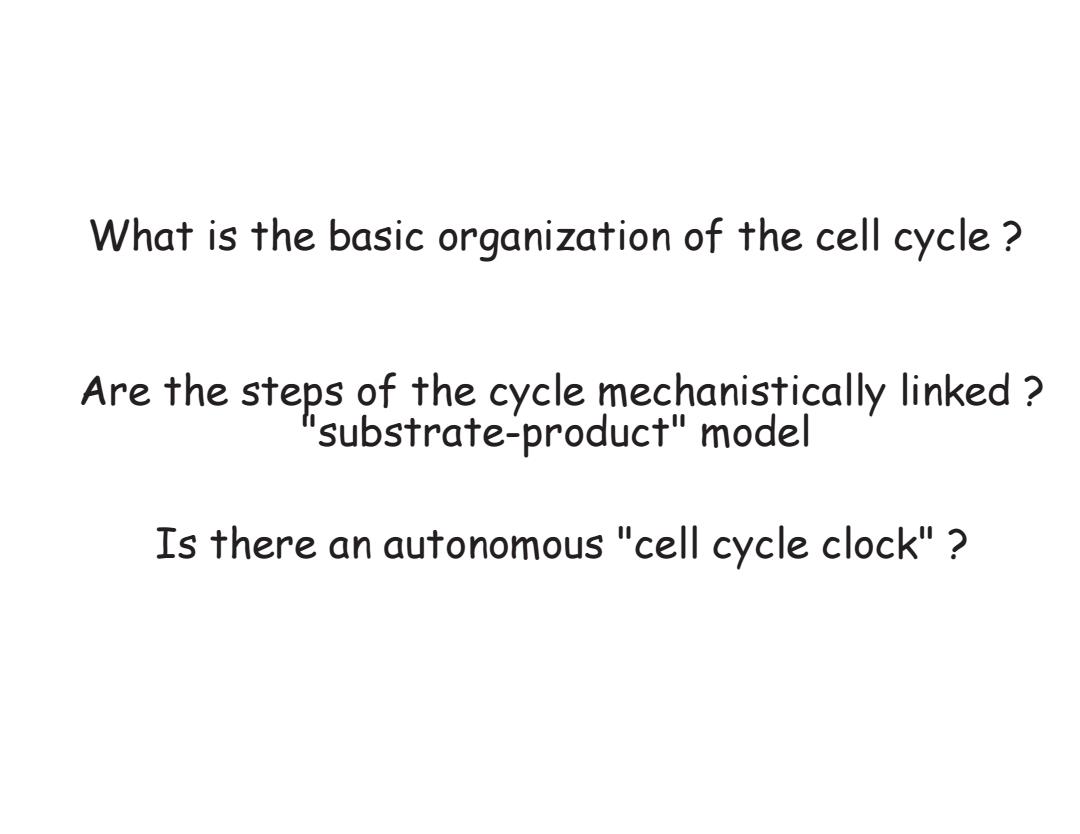
What is the basic organization of the cell cycle Are the steps of the cycle mechanistically linked substrate-product"model Is there an autonomous "cell cycle clock"?
What is the basic organization of the cell cycle ? Are the steps of the cycle mechanistically linked ? "substrate-product" model Is there an autonomous "cell cycle clock" ?
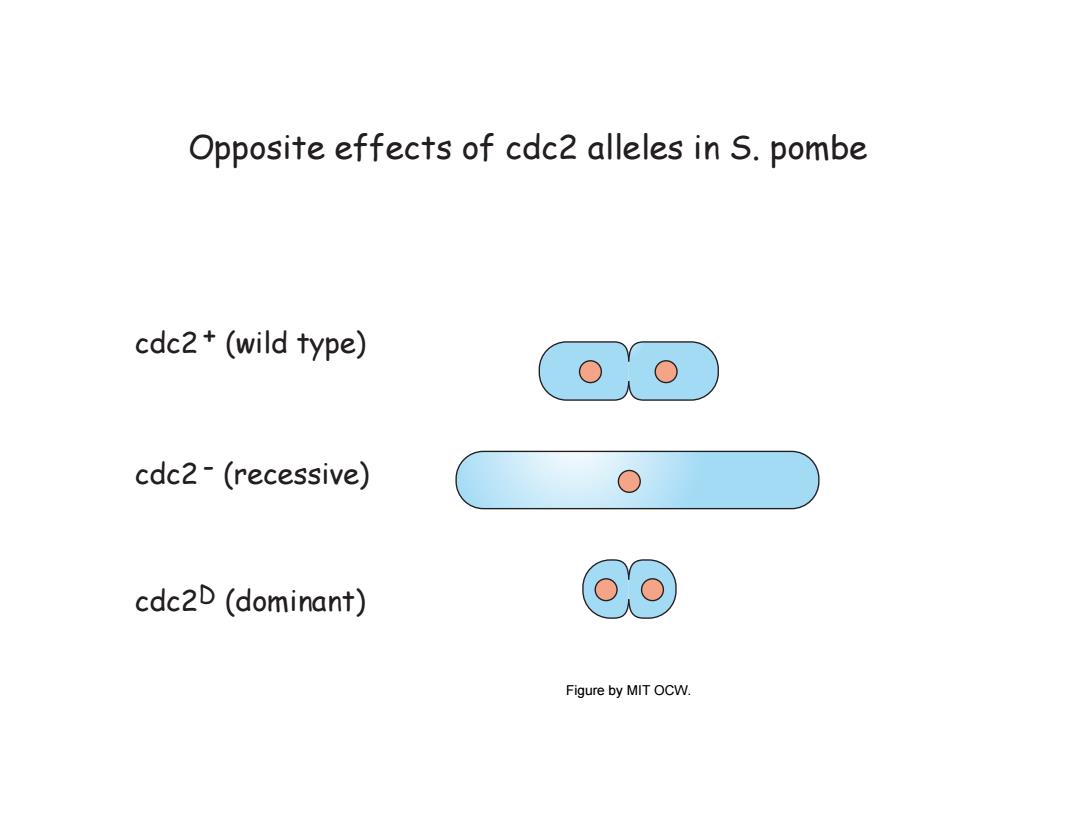
Opposite effects of cdc2 alleles in S.pombe cdc2+(wild type) cdc2-(recessive) cdc2D(dominant) @0 Figure by MIT OCW
Opposite effects of cdc2 alleles in S. pombe cdc2 + (wild type) - cdc2 (recessive) cdc2D (dominant) Figure by MIT OCW

There is there an autonomous "cell cycle clock" which is composed of cyclin CDK The amount of cyclins oscillates throughout the cell cycle However,the steps of the cycle are linked by negative feedback loops known as "checkpoint control"pathways
There is there an autonomous "cell cycle clock" which is composed of cyclin + CDK The amount of cyclins oscillates throughout the cell cycle However, the steps of the cycle are linked by negative feedback loops known as "checkpoint control" pathways
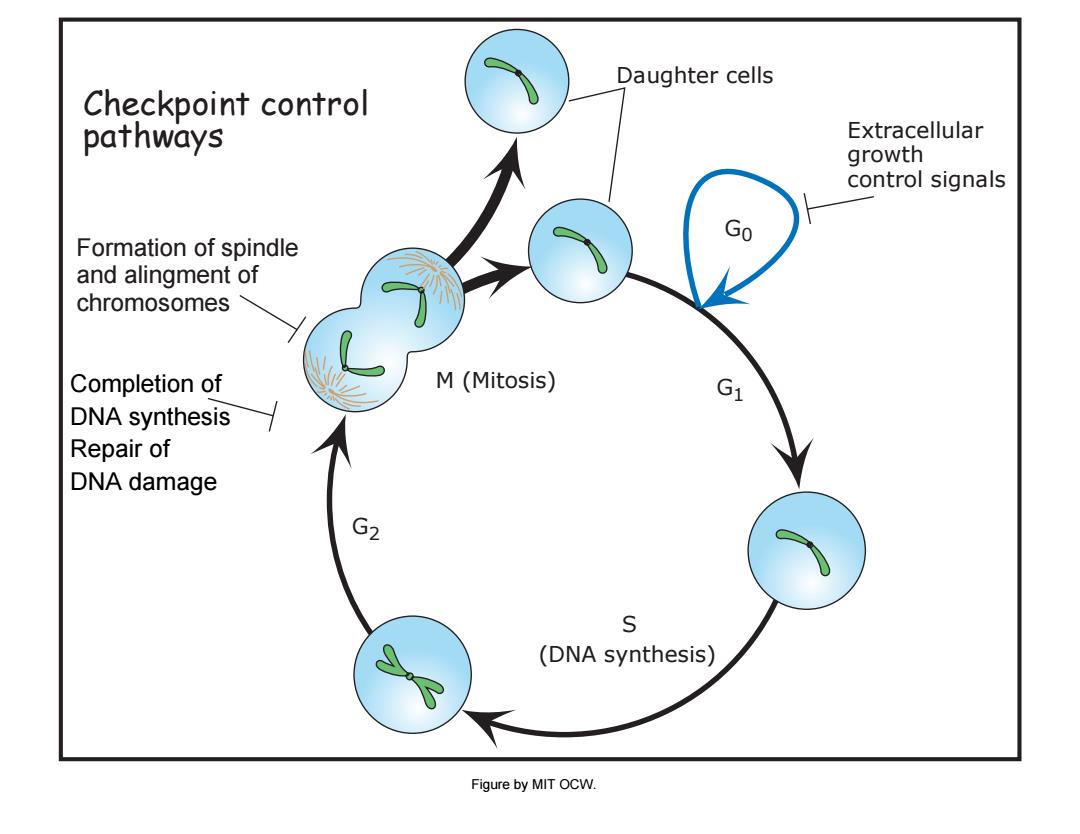
Daughter cells Checkpoint control pathways Extracellular growth control signals Formation of spindle Go and alingment of chromosomes Completion of M(Mitosis) DNA synthesis Repair of DNA damage G2 S (DNA synthesis) Figure by MIT OCW
growth (DNA synthesis) S G1 G0 G2 Formation of spindle and alingment of chromosomes Completion of DNA synthesis Repair of DNA damage Extracellular control signals Daughter cells M (Mitosis) Checkpoint control pathways Figure by MIT OCW

Image removed due to copyright reasons
Image removed due to copyright reasons
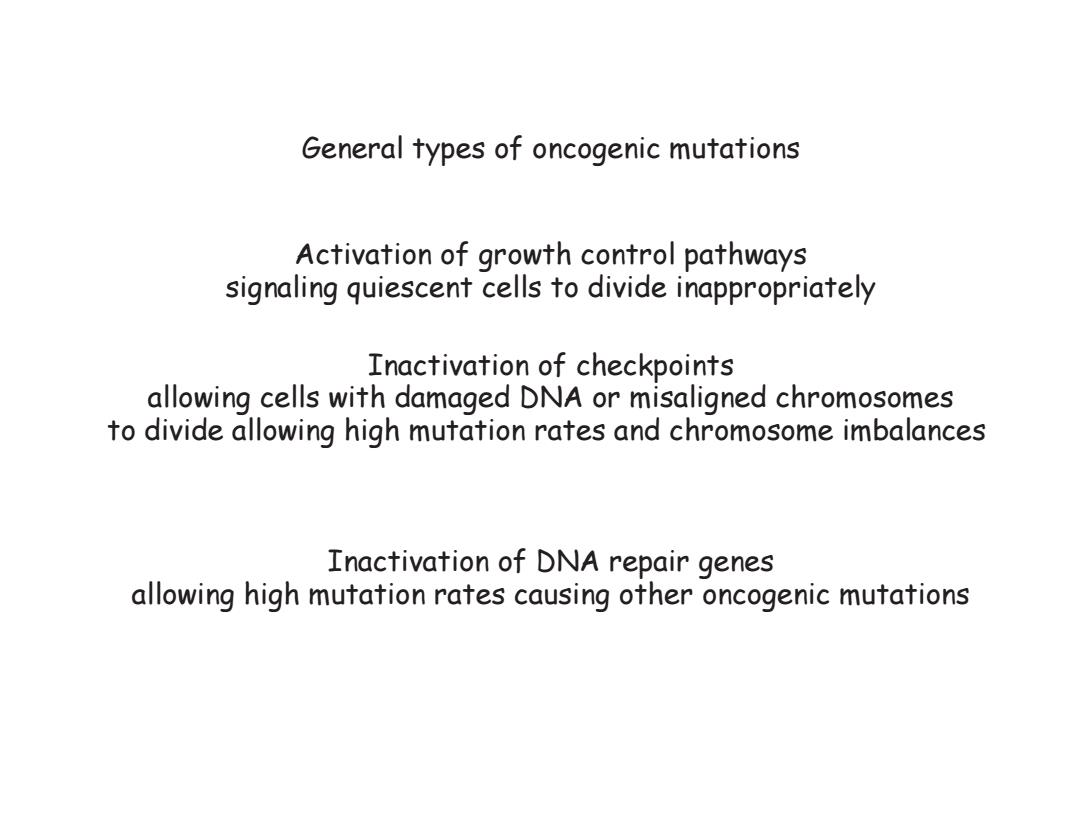
General types of oncogenic mutations Activation of growth control pathways signaling quiescent cells to divide inappropriately Inactivation of checkpoints allowing cells with damaged DNA or misaligned chromosomes to divide allowing high mutation rates and chromosome imbalances Inactivation of DNA repair genes allowing high mutation rates causing other oncogenic mutations
General types of oncogenic mutations Activation of growth control pathways signaling quiescent cells to divide inappropriately Inactivation of checkpoints allowing cells with damaged DNA or misaligned chromosomes to divide allowing high mutation rates and chromosome imbalances Inactivation of DNA repair genes allowing high mutation rates causing other oncogenic mutations